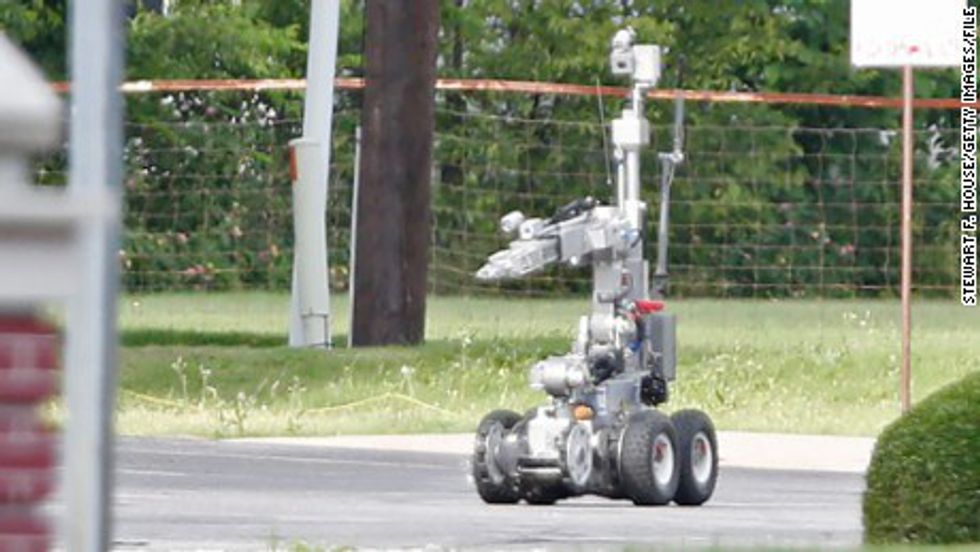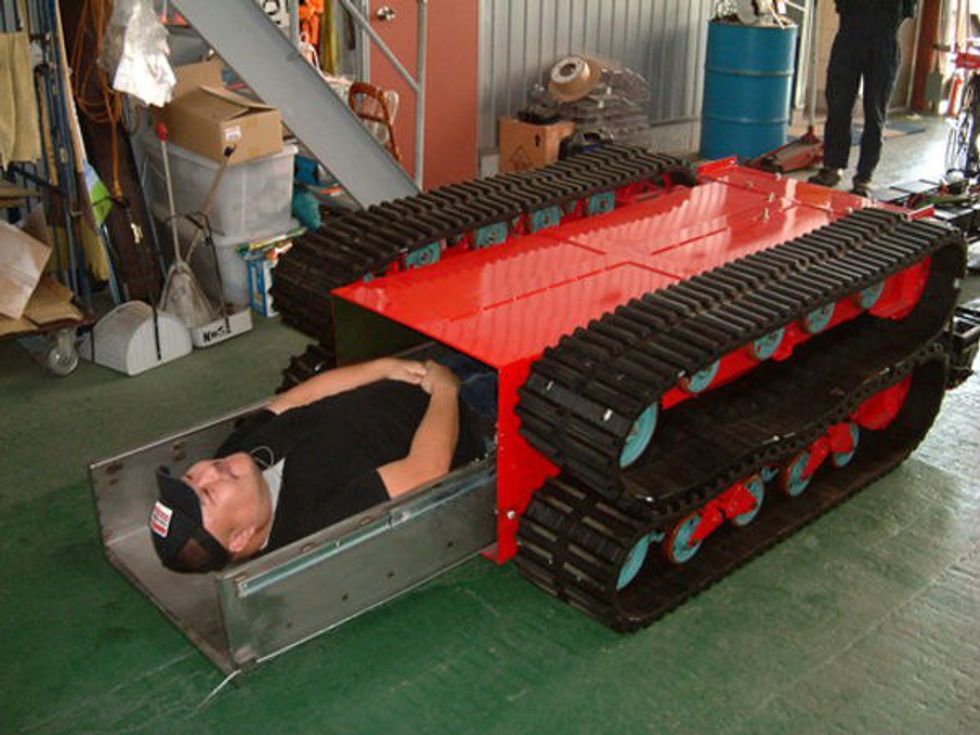The events of last Thursday represent one of the worst tragedies in Dallas since the Kennedy assassination in 1963. What was supposed to be a nonviolent protest over police shootings was disrupted by Micah Xavier Johnson, who shot five DPD officers to death and wounded seven more. So far, it appears he had no other motivations besides hatred of white people and police. After an hours long standoff in a parking garage, it became apparent that negotiation was no longer an option. Rather than risk the lives of any more officers, the department made the unorthodox decision to repurpose a remote controlled bomb disposal robot by arming it with an explosive and sending it to the shooter's location in the parking garage. The bomb was then detonated, killing Johnson in the explosion. This is the first time a bomb disposal robot has been used for a purpose other than what it was built for, but It's the first time such a robot has been used to kill a shooter.
The type of robot used by Dallas police
The technological solution can't be taken as a sign that police are going to launch a drone warfare campaign on crime. The particular robot in this case was an Andros bomb disposal robot, manufactured by Northrop Grumman, and is not a killing machine. It doesn't have weapons like the Predator and Reaper drones that have been used by the CIA and US military. It is very primitive compared to the autonomous and semi-autonomous ground-based war machines currently in development here and in China. We can't expect Robocop to become a reality anytime soon (a development that would come with plenty of ethical concerns), but it doesn't seem too outlandish (though I admit it may be a little too early to say) to believe that we could eventually see more use of robotics in law enforcement.
In addition to the bomb disposal robots, there is a growing number of machines available to handle situations too dangerous for cops and other first responders. Search and rescue (SAR) robots can be used to locate wounded people in a damaged building, remove debris that has trapped them, and carry the person to safety. If police are searching for car bombs or have to breach a door, they might use a BOZ 1. In a hostage situation, a robot equipped with scanners and a microphone could be used to determine how many hostages and captors there are as well as their locations. It could also be used to communicate with hostages and hostage takers. A similar throwable robot, such as the Recon Robotics Scout, can be used to investigate who or what a police SWAT team can expect before storming a building.
An SAR created for the Yokohama police department goes for a test run
This technology can prevent further loss of human life, but it isn't a panacea. Things do go wrong in the field and If it can be attributed to human error, the robot operator will hopefully be held accountable, just as police should be in a bad shooting. Determining accountability will be an even greater challenge if and when machines become more autonomous.


























